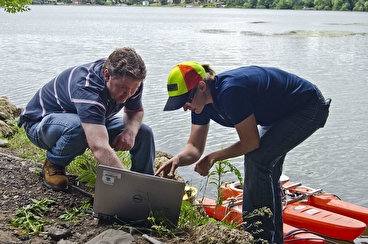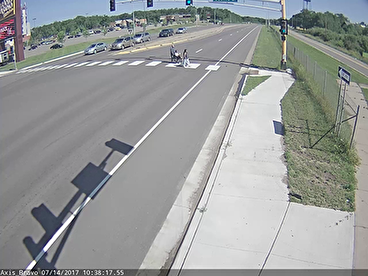What’s behind the transportation workforce shortage—and what should public agencies do about it?

The transportation industry is facing a growing workforce shortage, especially within the public sector. A U of M study identified causes of the shortage and strategies public agencies can implement to attract and retain staff.
According to the study, shifting demographics are a major reason for the workforce shortage.
The US labor force is aging rapidly and baby boomers are retiring. The labor force is also becoming more diverse, and immigration remains a key driver of population growth. Jobs in rural areas—which have older and less diverse populations—tend to be harder to fill than those in urban areas.
The research team developed recommendations for public transportation agencies, such as cutting hiring red tape and offering mentorships. Researchers also say organizations should focus on career mobility and paths for advancement—and, given pandemic impacts, take a strategic and flexible approach to planning for recruitment, retention, and development of employees.
Principal investigator: Kenneth Bartlett, Department of Organizational Leadership, Policy, and Development. Sponsor: Minnesota Local Road Research Board.
Learn more: What’s behind the transportation workforce shortage—and what should public agencies do about it? CTS Catalyst, July 2021
’Expanding the Transportation Workforce’ project creates tools for local agencies

Many local public works agencies have an approved construction program—and constituents demanding improvements—but lack qualified staff to deliver the work. The Minnesota Local Technical Assistance Program (LTAP), housed within CTS, led the creation of tools to help expand the transportation workforce and fill open positions.
The tools take a two-pronged approach: One set helps local agencies attract and retain workers in the short term, while another set helps agencies promote career opportunities to students and feed the longer-term worker pipeline. The tools include:
- Recruitment Toolkit for Local Agencies
- Training Roadmap for Civil Engineering Technicians
- Community Outreach and Communication Guide
- Local Agency Careers in Minnesota brochure
Principal investigator: Stephanie Malinoff, CTS/Minnesota LTAP. Sponsor: Minnesota Local Road Research Board.
Learn more: Expanding the Transportation Workforce: Tools for Local Agencies
Study helps improve pedestrian safety on reservations

The Minnesota Department of Transportation implemented a new signal system based on crossing-volume data requested by the Mille Lacs Band of Ojibwe and collected in collaboration with U of M researchers.
Minnesota’s Native American population is among the priority populations identified in MnDOT’s statewide pedestrian system plan. The agency turned to U of M researchers to learn more about pedestrian behavior on reservations across the state and help identify potential safety countermeasures. This work is part of a larger MnDOT-funded study of pedestrian travel behavior and safety in rural settings.
The new signal—a high-intensity activated crosswalk, or HAWK—began operation in December 2020 at a pedestrian crossing near Grand Casino Mille Lacs. Mille Lacs Band staff had suggested a HAWK, which costs less to build than traditional traffic signal systems, to MnDOT after seeing it in operation at other locations.
A key lesson of the Mille Lacs project is the importance of early engagement with collaborators. And although rural pedestrian crossing volumes are low relative to urban volumes, researchers say investments on reservations are warranted to redress historical marginalization of tribes and existing disparities in traffic safety.
Principal investigator: Greg Lindsey, Humphrey School of Public Affairs. Co-investigator: John Hourdos, Minnesota Traffic Observatory. Sponsor: Minnesota Local Road Research Board.
Learn more: U study helps identify and prioritize high-risk pedestrian crossings on reservations, CTS Catalyst, February 2021